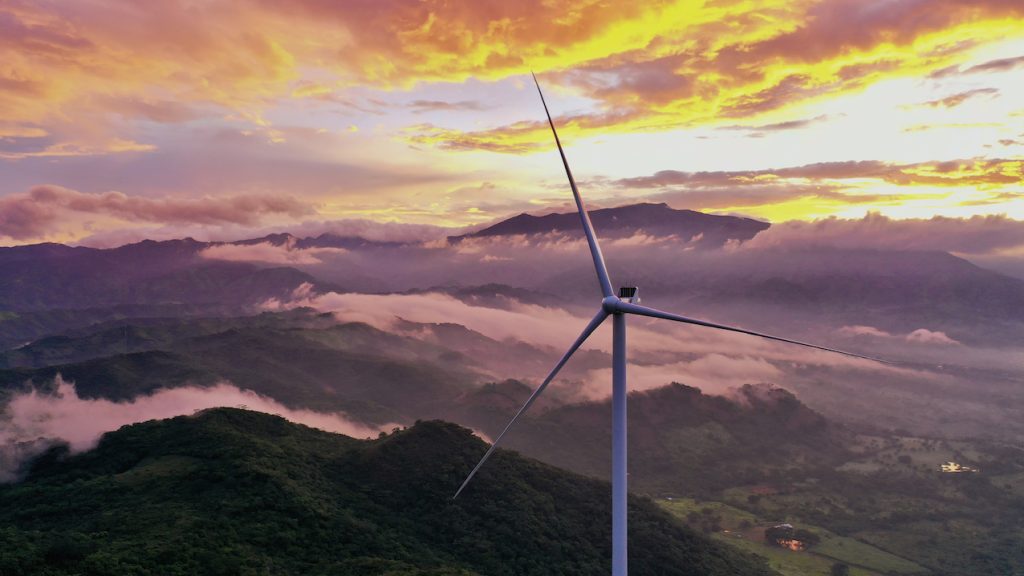Clean Energy

Aiming at increasing its energy generation capacity, the government of El Salvador has been working in coordination with different government ministries and autonomous institutions to facilitate the establishment, operation and growth of new investments in the energy sector.
Thanks to this commitment and teamwork to streamline and simplify processes and procedures, new biogas and solar energy plants have been put into operation, as well as the first large-scale energy storage system in Central America. In its first 18 months in office, President Nayib Bukele's team has managed to materialize close to US$1.3 billion in investments related to wind, natural gas and solar energy projects.
According to information from the Transactions Unit (TU), the price of energy in the Salvadoran market registered 60.54 dollars per megawatt per hour (MW/h) in December 2020, as an indicator price. This value represented a reduction to a quarter compared to the same quarter of 2019 and up to 40% compared to 2018. This price level is the lowest in more than 15 years in the TU's records. Another relevant information is that energy imports from El Salvador had a significant reduction of 49.1% during the current administration, according to data from November 2020. Now, eight out of every 10 units of energy provided for the country's demand come from local actors.
One of the most important projects in the energy sector is being executed by the company Energía del Pacífico (EDP), in the western part of the country, more specifically in Acajutla, department of Sonsonate. This investment includes the first electricity generating plant based on liquefied natural gas. It has a generation potential of 378 megawatts to meet the country's energy demand.
In addition to being one of the largest investments the country has made in recent times, more than 1 billion dollars, it will contribute to supply 30% of the country's energy demand through a new energy resource, producing clean and efficient energy and generating more than 1,000 jobs in the construction and operation of the plant.
With the entry of natural gas, the aim is to diversify the energy matrix, especially by reducing dependence on petroleum products to generate more stability in electricity prices.
Another important project in the electricity sector is related to the production of wind energy. The company in charge of generating is the Uruguayan Ventus. The Park is located in the western zone of El Salvador, more specifically in Metapán, department of Santa Ana. The approximate investment is US$113 million.
This is the first wind energy project in the country, which consists of the construction, installation and operation of an electric generation plant that seeks to take advantage of the wind currents present in the mountainous area of Metapán, which initially contemplates the generation of 50 megawatts of energy.
The importance of this project lies in the fact that it is an inexhaustible renewable resource, since there is no combustion, which means no CO2 emissions into the atmosphere and other greenhouse gases that cause climate change. In addition, it seeks to promote the development of a new electricity generation technology in the country and provides knowledge transfer.
As important is the project already under construction by the Comisión Ejecutiva Hidroeléctrica del Río Lempa (CEL), of the future 3 de Febrero Hydroelectric Power Plant, located in the municipality of San Luis de la Reina, department of San Miguel, a work that had been paralyzed for decades. In October 2021, the filling of the reservoir of the future plant began.
"We are finally achieving what El Salvador had been denied for so long: to finish this project that has been a headache for eleven years, we inherited a very serious problem, we had the pandemic, ports and factories were closed and even so we managed to move forward, thanks to teamwork, to the strength of CEL, dedicated to this project for the country", says Daniel Álvarez, president of CEL.
The reservoir filling limit ranges between 153 and 155 meters above sea level, a process that involves the placement of 17 "Stop Logs" (concrete blocks) that close the diversion conduit and allow it to reach its maximum level.
The filling maneuvers are carried out while maintaining the constant flow of the river, guaranteeing the ecological flow downstream. Once the reservoir is filled, hydromechanical tests will begin and operations at the 3 de Febrero hydroelectric plant are expected to start by the end of 2022. The total cost of the project is estimated at US$750 million.
Another important investment is the Biogas Power Generation Plant. CEL, together with the consultants of the FichtnerI/EC consortium, has been working on the project for several months. FichtnerI Water and Transportation, a German company recognized worldwide in the field of wastewater and energy projects, mainly biogas, has already carried out similar projects in Germany, Afghanistan, Saudi Arabia, Tajikistan, Peru and Nicaragua.
The biogas plant will be built between the municipalities of Ciudad Delgado and Cuscatancingo, both in the Department of San Salvador. The plant will have an installed capacity of 5.2 megawatts and will generate electricity for an average of 21,000 families that consume an average of 100 kWh per month.
This project will prevent the discharge of more than 43 million cubic meters of untreated wastewater into the Acelhuate river basin. The investment amounts to US$32 million, which will be financed with CEL's own funds.
It will be built under a hybrid renewable generation scheme. Energy will be generated by means of wastewater, sun and water, with the installation of solar panels on the roofs and the construction of a small hydroelectric plant.


